Ballymurphy inquest: Woman 'shocked' by boy's injuries
- Published
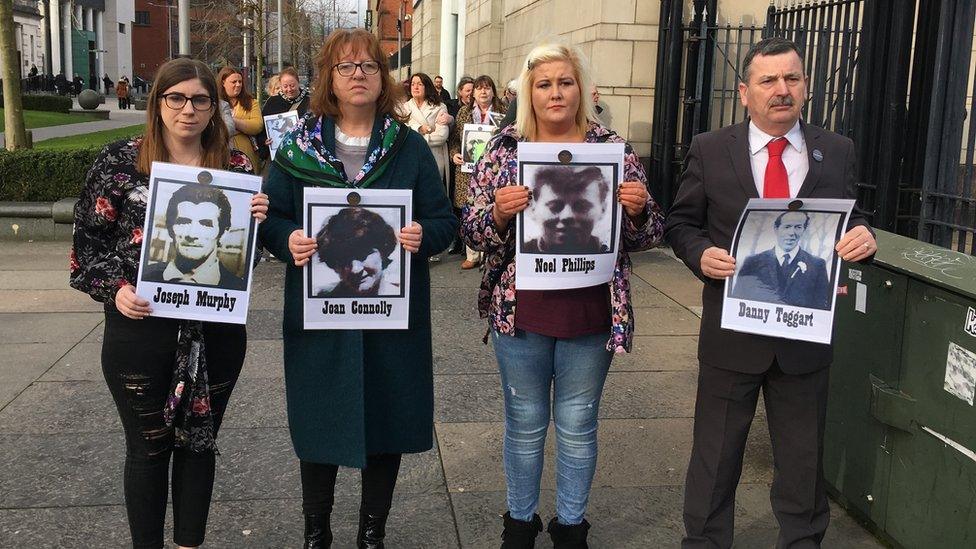
Relatives of some of the victims attended the inquest in Belfast on Thursday
A former first-aider has told the inquest into the deaths of 10 people in west Belfast in 1971 how she tried to treat the serious injures of an 11-year-old boy who had been shot.
Elizabeth Donnelly was 19 and working for the Order of Malta at the time.
The Ballymurphy inquest has been hearing evidence about some of the deaths in August that year.
Joseph Murphy, Joan Connolly, Noel Phillips and Daniel Teggart all died as a result of shooting.
The deaths followed three days of gunfire in Ballymurphy after the introduction of internment.
Mrs Donnelly described how she had been treating people hurt by rubber bullets and CS gas before hearing that some people had been shot.
She was taken during periods of gunfire to a house adjacent to the Manse area beside Springfield Road, where people inside informed her that some people had been shot in a nearby field.
Mrs Donnelly told the inquest that Edward Butler was brought in 30 to 45 minutes later.
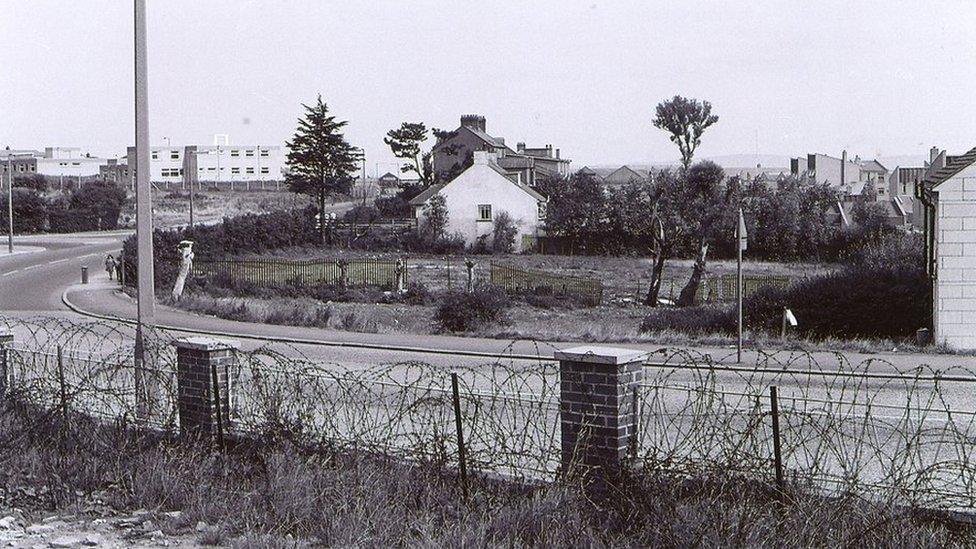
Four of the Ballymurphy victims dies as a result of shooting in the Manse field
She said he was bleeding heavily from the right hip, adding that the bullet had entered there and exited below his bladder.
"He was very shocked," she said. "He was only a child."
Mrs Donnelly said she had bandaged his wounds as best as she could.
She recalled that the boy had said over and over again: "She was crying for help and they shot her in the face."
Mrs Donnelly did not understand what this meant until some time later when she learned of the fatal injuries to Joan Connolly, a mother of eight.
Giving evidence on Wednesday, Edward Butler confirmed that he did not recall saying that.

Who were the victims?
Father Hugh Mullan, 38, and Francis Quinn, 19, were shot in an area of open ground behind Springfield Park
Daniel Teggart, 44, Joan Connolly, 44, Noel Phillips, 19, and Joseph Murphy, 41, were shot near the Henry Taggart Army base near Springfield Park
John Laverty, 20, and Joseph Corr, 43, were shot at separate points at the top of Whiterock Road
Edward Doherty, 31, was shot at the corner of Brittons Parade and Whiterock Road
John McKerr, 49, was shot outside the old Corpus Christi Parish

Mrs Donnelly told the court that local people found an ambulance crew that had come to the area to help a woman in labour, and persuaded the crew to also take Edward Butler to the Royal Victoria Hospital.
Later, Anna Breen gave evidence about the day her neighbour and close friend Joan Connolly was shot and killed.
She explained that both women had gone to collect some of their daughters from Springfield Park because the children had been helping Fr Hugh Mullan to get his house ready and collect groceries for some visitors.
She said they had met Joseph Murphy and Daniel Teggart, who were also fatally shot later that day.
Mrs Breen described a moment when she saw a figure with what looked like a stick on the roof of Springmartin Flats, and remarked on it to the man beside her.
She said he looked up and saw a second figure and pushed the women down shouting that there was a sniper.
Everyone took cover, she said, as shots then rang out.
She remembered being cut on some barbed wire.
Mrs Breen could not be sure if the figures on the roof were soldiers or not.
She last saw Joan Connolly at that moment as she climbed over a tree trunk.
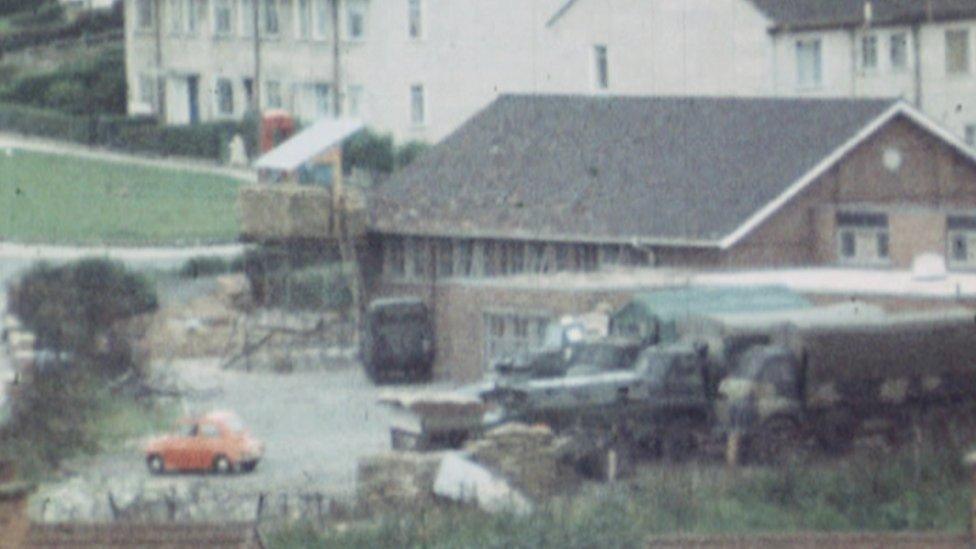
Soldiers from the Parachute Regiment were based at Henry Taggart Army base
Mrs Breen said she was pulled to safety by two first-aiders and eventually crawled from house to house to avoid the gunfire, before making it home to her young family.
Joan Connolly was shot dead in the Manse area shortly afterwards.
The Army claimed at the time that she had been a gunwoman.
Mrs Breen told the court that Joan Connolly would never have carried a weapon and that all she had that day was cigarettes and matches.
She remembers of the Parachute Regiment passing the Connolly home and singing mocking songs two days after her death.
Mrs Breen also painted a picture to the court of the contrast between the soldiers of the Parachute Regiment in August 1971 and the previous soldiers who had been based in the area.
She said the two women had regularly provided tea and biscuits for soldiers from the previous regiment and had mothered some of the younger men.
When those soldiers had left the area, she said, both women had been given gifts.
She smiled as she related that she was given a bouquet of flowers, and she was slightly jealous when Mrs Connolly was given an ornament instead.
Joan Connolly's eldest daughter was married to a British soldier.
But Mrs Breen said that the Paras were not interested in getting to know the community and had "wanted blood from the moment they arrived."
"My heart for breaks for those innocent people who were killed." she said.
Of the claim that her friend Joan Connolly had had a weapon, she said: "Was cigarettes a gun? Mrs Connolly never seen a gun in her life until the soldiers came. They are telling massive lies.
"Mrs Connolly was a lady - a gentle lady.
"She'd have done anything for anybody.
"No. No. No way. She lived for her children."
- Published6 March 2019
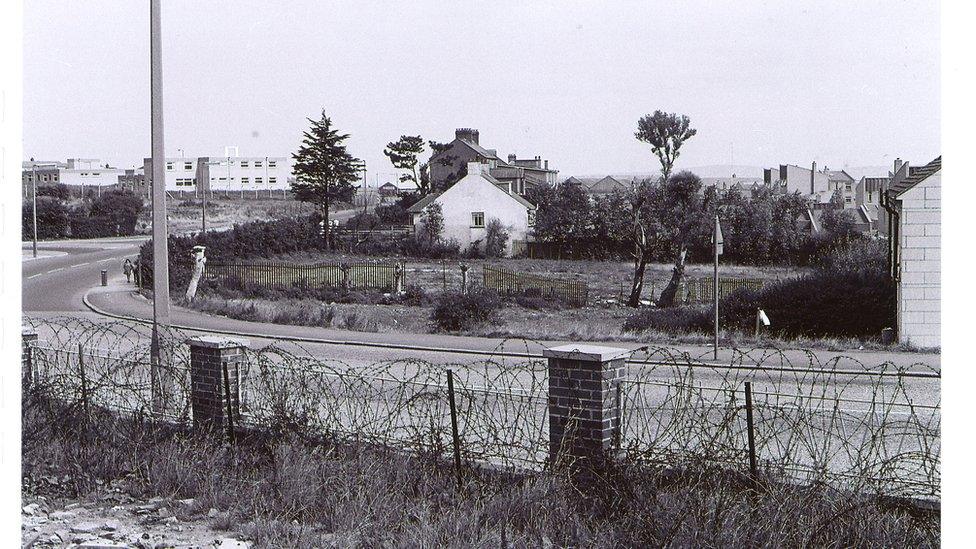
- Published5 March 2019

- Published11 May 2021
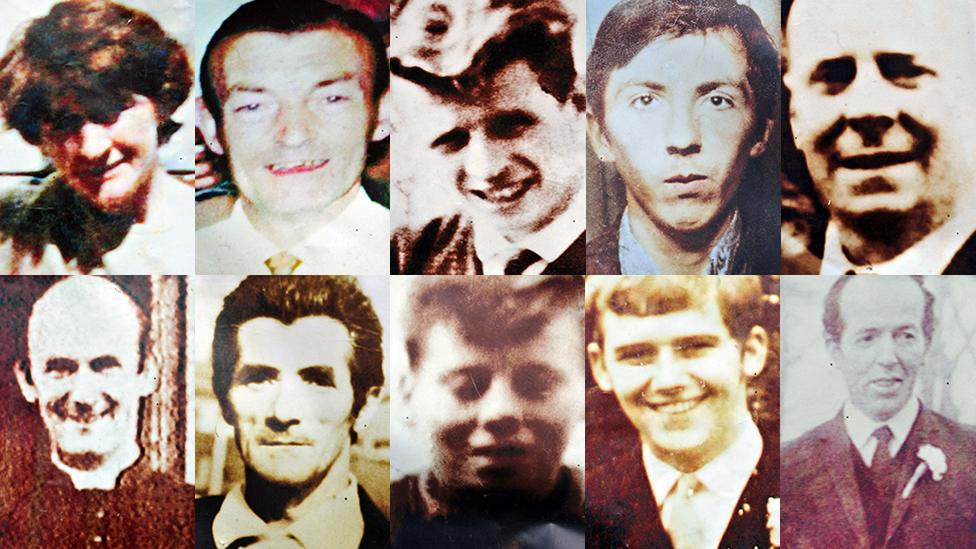
- Published4 March 2019

- Published26 February 2019
